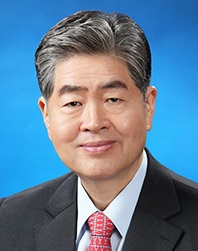- Daesung News
- Read the latest news featuring Daesung Group
| Title | [The Korea Times] Appropriate technology energy solutions: When small is beautiful | 2019.04.18 |
|---|---|---|
|
FROM: The Korea Times [The Korea Times - April. 18, 2019]
Appropriate technology energy solutions: When small is beautiful
By Younghoon David Kim
Energy is so fundamental to the functioning of modern states that it tends to be developed and delivered on a grand scale, at great cost to people, companies and governments.
This is news to nobody. In addition to their monthly household energy bills, which in Korea can be alarmingly high, taxpayers in most countries pay a huge indirect amount towards energy in that their tax money funds infrastructure and the bureaucracy around energy management.
But not all solutions to energy problems need be grand.
Take, for example, the idea of extracting gas from landfill sites. Or small-scale use of solar power. Such systems can operate within the national power grid system or outside of it in a way that is cheaper, cleaner and more efficient.
They are examples of the application of what is known as "appropriate technology." This concept has been around for 50 years or so. It has gone under other names and merged in some sense with the more popular notion of sustainability.
When applied to energy, it refers to use of technology that passes what I call the 5As test in that it is affordable, acceptable to the public interest, accountable to all stakeholders, accessible (ie, located in the right place) and available at the right time when it is needed.
Energy systems that pass this test tend to be on a relatively modest scale and on a local level in a way that is independent of outside control and that is at the same time energy-efficient and environmentally sustainable. (A recent development is the provision of technology on open source principles. A lot of open-source appropriate technology plans are freely available online).
Appropriate technology has been used to address issues across the spectrum, from construction, food preparation, and healthcare to the delivery of clean water and efficient lighting. For the past 50 years, it has been primarily identified as a form of local self-help development tin poor rural areas.
And it's been associated with foreign aid, with well-meaning organizations and companies in developed nations arranging for well-meaning volunteers to help out grateful villagers in poorer countries whose governments may not be able to afford the transfer of more large-scale and capital-intensive technology from developed countries.
As an example, my company, Daesung Group, has developed a hybrid wind and solar system called SolaWin, which generates electricity that powers a stand-alone pumping system.
The groundwater pumped has many uses including preventing the spread of desertification, agricultural development, supplying sustainable electricity and clean drinking water thus contributing to a better standard of living in rural communities as well as reducing greenhouse gas emissions. This technology is used at a number of locations in Mongolia, Ethiopia, Bangladesh and Kazakhstan, as well as on Santa Cruz Island in Ecuador's Galapagos National Park.
Despite this association with developing countries, there is a definite role for appropriate technology in developed countries. In this case, the concept is more associated with sustainability. It characterizes the use of technology that works on a local level and which minimizes any negative impact on the environment and on society.
Consider, for instance, the greening of landfills and extraction of the gases created by them to provide local power. My own company developed a plan in 2002 for a landfill in Daegu which went operational in 2006 to refine methane. The project now supplies 50 million cubic meters of gas to the Korea District Heating Corporation for use as boiler fuel for approximately 15,000 households.
Not only does this operation make good use of the otherwise unused gas that is available, but it also reduces CO2 emissions and - not small thing - the smell emanating from the dump.
The interesting thing about this project is that while the better known Nanjido landfill in Seoul, near the World Cup Stadium, was greened after the site was no longer used, the Daegu site is still used as a landfill.
In other words, the 1,000 tons a day of trash from the city is put to use to supply energy. In addition, the Daegu project is an excellent example of a public private partnership.
It is also economic. The original investment was the equivalent of $26 million and, at the highest, the net return on the gas sold was in the region of $2 million a year.
Such projects could be repeated all over the country. |
||
| NO | Title | Date |
|---|---|---|
| 252 | [Korea Joongang Daily] Solutions wa... | 2019.06.20 |
| 251 | [The Korea Times] Has Fourth Indust... | 2019.05.10 |
| 250 | [World Energy News] Russian Pipelin... | 2019.05.03 |
| 249 | [The Korea Times] Appropriate techn... | 2019.04.18 |
| 248 | [The Korea Times] Prospects for Nor... | 2018.09.21 |






